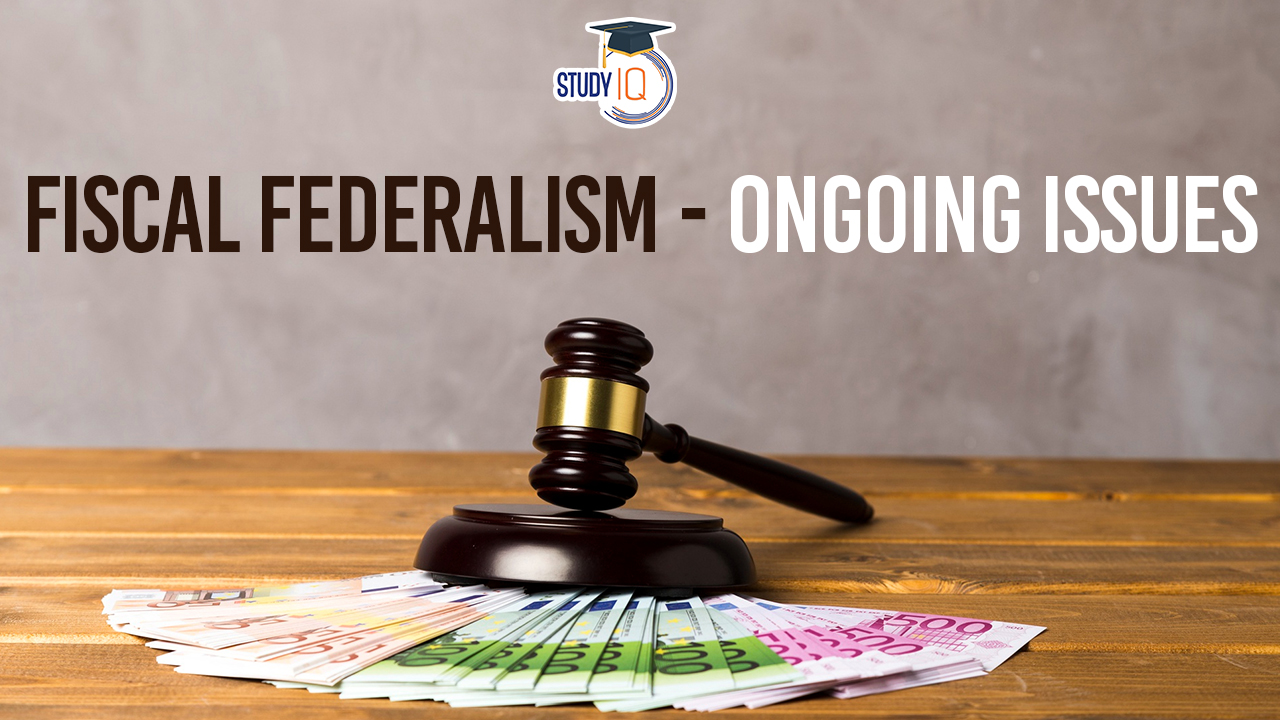Table of Contents
Context: Kerala Government moved the Supreme Court last year against Centre limiting state’s borrowing capacity, and alleged violation Of Fiscal Federalism. The Tamil Nadu Chief Minister recently appreciated Kerala’s action.
Fiscal Federalism: An Overview
- Definition: It refers to the financial relationship between the different levels of government, namely the central or union government and the state governments.
- Objective: To ensure efficiency in the allocation of resources, the distribution of public goods and services, and the stabilisation and growth of the economy while maintaining considerations of equity across different regions.
Constitutional Provisions
- Article 280: It provides for the establishment of a Finance Commission to define the financial relations between the central government and the states and to recommend the distribution of the Union taxes between the Union and the States, and among the States themselves.
- Article 293: It relates to the borrowing powers of the States. It mentions that a state can borrow only under certain conditions, especially if there is already an outstanding loan to the Centre.
Issues with Fiscal Federalism
- Fiscal Responsibility and Budget Management (FRBM) Act: As per the states, the prior consent from the Union government, mandated by this section, has been converted into a restrictive tool to limit deficit financing beyond the limits prescribed by the State FRBMs
- Rising Liabilities: Since 2014, the combined outstanding liabilities of states and union territories have been increasing, influenced by policies like the Ujwal DISCOM Assurance Yojana (UDAY) and Farm Loan Waiver schemes.
- Cesses and Surcharges: There’s a growing trend of cesses and surcharges comprising a larger portion of the divisible tax revenue, effectively reducing the share of revenue available for distribution to states.
- Goods and Services Tax (GST): This has led to states losing autonomy in setting tax rates according to their specific developmental needs, increasing their financial dependency on the central government.
- Article 282 and its Broad Interpretation: This has been used extensively to justify centrally sponsored schemes, impacting the fiscal federal structure by centralising funding and decision-making for programs traditionally within state jurisdiction.
We’re now on WhatsApp. Click to Join
Way Forward
- Harmonise FRBM Act Provisions: Align the FRBM Act guidelines for both central and state governments to uphold fiscal discipline while considering their specific fiscal contexts.
- Expand State Taxation Powers: Allow states more autonomy in setting tax rates to match their development needs, reducing dependency on central funds.
- Encourage Cooperative Federalism: Promote collaboration between central and state governments in policy-making for national benefit.
- Facilitate Regular Reviews and Dialogues: Create platforms for ongoing discussions between central and state governments to address fiscal challenges and explore enhancements to the fiscal federalism structure.
- Balance Fiscal Imbalances: Address disparities among states (horizontal) and the financial relationship between central and state governments (vertical) to ensure fair resource allocation.
- Implement Performance-Based Grants: Reward states for meeting developmental goals in health, education, and other areas to encourage effective governance.
| PYQ |
| Q. Consider the following statements:
1.The Fiscal Responsibility and Budget Management (FRBM) Review Committee Report has recommended a debt to GDP ratio of 60% for the general (combined) government by 2023, comprising 40% for the Central Government and 20% for the State Governments. 2.The Central Government has domestic liabilities of 21% of GDP as compared to that of 49% of GDP of the State Governments. 3.As per the Constitution of India, it is mandatory for a State to take the Central Government’s consent for raising any loan if the former owes any outstanding liabilities to the latter. Which of the statements given above is/are correct? [A] 1 only [B] 2 and 3 only [C] 1 and 3 only [D] 1, 2 and 3 Answer: Option (c) |


 SHANTI Bill 2025: India Opens Nuclear Se...
SHANTI Bill 2025: India Opens Nuclear Se...
 Revamp of MGNREGA Scheme 2025
Revamp of MGNREGA Scheme 2025
 National Energy Conservation Awards 2025
National Energy Conservation Awards 2025

























